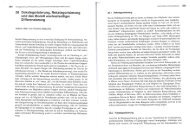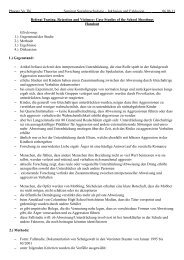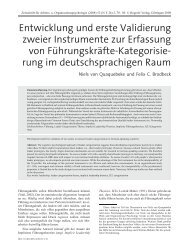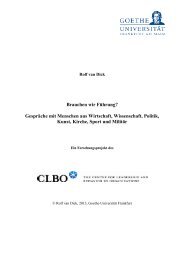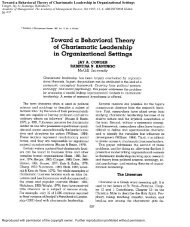Social Identity Theory and Self-categorization Theory: A Historical ...
Social Identity Theory and Self-categorization Theory: A Historical ...
Social Identity Theory and Self-categorization Theory: A Historical ...
You also want an ePaper? Increase the reach of your titles
YUMPU automatically turns print PDFs into web optimized ePapers that Google loves.
<strong>Social</strong> <strong>Identity</strong> <strong>Theory</strong> <strong>and</strong> <strong>Self</strong>-<strong>categorization</strong> <strong>Theory</strong> 205<br />
identity approach – social identity theory <strong>and</strong> self-<strong>categorization</strong> theory –<br />
were born in this era of crisis. What emerged was an ambitious <strong>and</strong><br />
far-reaching cluster of ideas that were pitched as an antidote to the overly<br />
individualistic <strong>and</strong> reductionist tendencies of existing theories of intergroup<br />
relations. Initially presented to the world in a series of books, chapters,<br />
<strong>and</strong> monographs intended largely for a European audience, the theories<br />
began to attract broader international attention in the 1980s <strong>and</strong> 1990s. 1<br />
The social identity approach is now one of the most influential theories<br />
of group processes <strong>and</strong> intergroup relations worldwide, having redefined<br />
how we think about numerous group-mediated phenomena <strong>and</strong> having<br />
extended its reach well outside the confines of social psychology. 2<br />
Of course, in this time, the theory has evolved <strong>and</strong> been refined, but<br />
has also gone down the occasional theoretical cul-de-sac. The faster a<br />
theory grows in terms of its effect <strong>and</strong> reach, the greater the capacity for<br />
confusion <strong>and</strong> misinterpretation. At times, it helps to take stock <strong>and</strong> to<br />
review where the theory has been, how it has changed, <strong>and</strong> where it is<br />
heading. This is the goal of the current paper. In tracking the history of<br />
the social identity approach, I will briefly review its key elements. It is<br />
hoped that this will serve as a platform from which interested readers can<br />
pursue more detailed <strong>and</strong> nuanced descriptions of the theories (Hogg &<br />
Abrams, 1988; Tajfel, 1978; Tajfel & Turner, 1979; Turner, Hogg, Oakes,<br />
Reicher, & Wetherell, 1987).<br />
<strong>Social</strong> <strong>Identity</strong> <strong>Theory</strong><br />
Given social identity theory’s credentials as a theory with a strong focus<br />
on how the social context affects intergroup relations, it seems paradoxical<br />
that the ideas were framed by an experimental paradigm in which context<br />
was stripped away altogether: the ‘minimal group paradigm’. Henri Tajfel<br />
<strong>and</strong> colleagues published a series of studies in the early 1970s in which<br />
participants were allocated into groups on the basis of meaningless <strong>and</strong><br />
arbitrary criteria. In one experiment (Tajfel, Billig, Bundy, & Flament, 1971),<br />
participants were categorized as ‘overestimators’ or ‘underestimators’,<br />
ostensibly on the basis of their estimates of the numbers of dots on a page<br />
(in reality all participants were allocated to the same group). In another<br />
experiment, they were allocated into groups on the basis of the flip of a<br />
coin (Billig & Tajfel, 1973). After having been told their group membership,<br />
participants then had to allocate points to members of their own group<br />
(the ‘ingroup’) <strong>and</strong> to members of the other group (the ‘outgroup’).<br />
From the perspective of a participant, this is an absurd task. The groups<br />
had no content, in the sense that they were based on trivial criteria. There<br />
was no interaction among group members, <strong>and</strong> in fact, participants did<br />
not know who else within the session was in their group. The groups had<br />
no history <strong>and</strong> no future outside the laboratory. Furthermore, the participants<br />
could not benefit or lose in any way from their point allocation strategy.<br />
© 2008 The Author <strong>Social</strong> <strong>and</strong> Personality Psychology Compass 2/1 (2008): 204–222, 10.1111/j.1751-9004.2007.00066.x<br />
Journal Compilation © 2008 Blackwell Publishing Ltd









